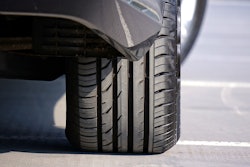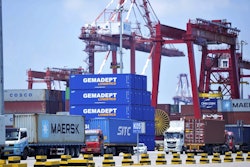Over the past few years, various companies have shared their excitement of the possibilities of the Industrial Internet of Things (IIoT) and edge computing to drive improved efficiency and cost savings. With pressure to exploit these innovations coming from both the CIO and CFO offices, information and operational technologists alike are charging into exploratory discussions, only to discover they don’t know where to start.
Here is the ‘recipe,’ cooked up by trial and error, with all crucial steps industrial customers have stumbled upon when exploring the intersection between the digital world and the industrial world.
Step 1: Identify a clear problem
Digitalization is not the endgame; in fact, it is a means to an end. If a company is operating at 100 percent uptime, with 100 percent yield, and a 100 percent profit margin, there is no problem for an IIoT solution to address. The reality is the Six Sigma aspiration, a method that provides organizations tools to improve the capability of their business processes, is merely an aspiration; companies have tangible problems that reduce efficiency for the top and bottom lines alike. The good news: this provides a straightforward opportunity for IIoT technology to identify clear problems and create definite solutions.
Step 2: Collect as much data about the problem as possible, including its importance
With a clear problem in mind, the focus shifts from identification to measurement and impact. A failure-prevention project that occurs once per day is much more likely to succeed than a project that occurs once per year. The problem must arrive somewhat frequently, with precisely measured timing, to be evaluated and addressed correctly. If this ‘problem data’ is not already being captured, a project cannot begin until a statistically significant amount of conditions (both good and bad) are recorded. Additionally, the economic impact of the problem is worth investigating at this point. A problem that costs $5,000 per year may not be worth solving, but a problem that costs $500,000 per year may be.
Step 3: Develop a hypothesis
After identifying and measuring the problem and its impact, the next step is crafting a hypothesis to explore solutions. For example, “I think excessive vibration and power fluctuations cause compressors to fail unexpectedly,” or “I think a bus swerving suggests the driver is operating the bus in an unsafe manner and could cause an accident.” Often, the operational technology (OT) department or domain experts can provide a good, initial hypothesis. Of course, this hypothesis may end up being incorrect, but the process of proving it could lead to new, actionable insights and new threads to pull.
Step 4: Measure the hypothesis using sensor data
Now, with a hypothesis in place, we must compare the original problem data to potential causation data — i.e., comparing temperature sensor readings against the production of scrap metal. If new sensors, such as vibration, acoustic or even cameras, have been added, the data collection period will have to begin again, as a statistically significant amount of sensor data will have to be correlated against problem data during the same timeframe.
Step 5: Apply domain expertise and data science
If the hypothesis is simple, an OT person may be able to eyeball a new insight; however, particularly when there are lots of variables involved, data science may be required to build a precise model. This model would be built on the collected data and would use a combination of sensor data and other reference information to predict if a problem will occur. This process typically takes months for smaller data sets but can be sped up if all the subsequent data collection is well organized. In fact, any customer who follows this recipe will be appreciated by their data science team, as the unpleasant time spent of collecting, understanding and joining this data together will be minimized, leaving more time at getting to the meat of the problem.
Step 6: Implement your findings strategically and realize the value
Lastly, new insights need to be implemented. If the prediction is weak or the initial hypothesis proves false, additional variables or the addition of new sensors can improve or even redefine the project.
The recipe for IIoT success may take time and involve repeating steps, but can lead to improved efficiency and cost savings if followed correctly. Adding an edge layer to complement the cloud cuts transport cost by orders of magnitude and produces insights immediately as the data streams off sensors.
Matthew C. King is Global Sales & Business Development Manager at FogHorn Systems.






















